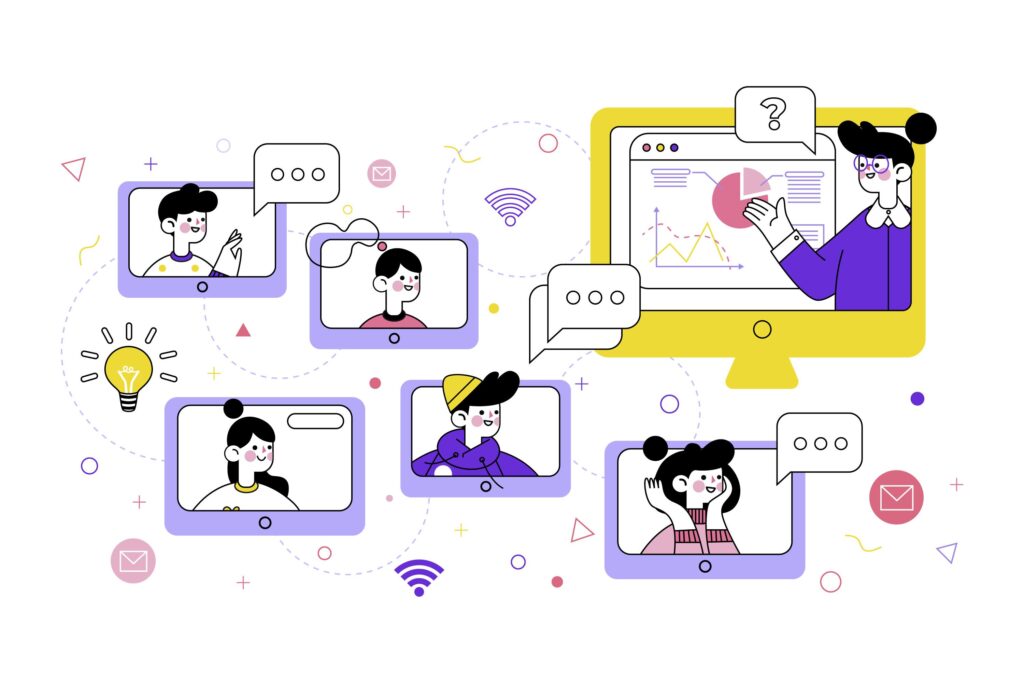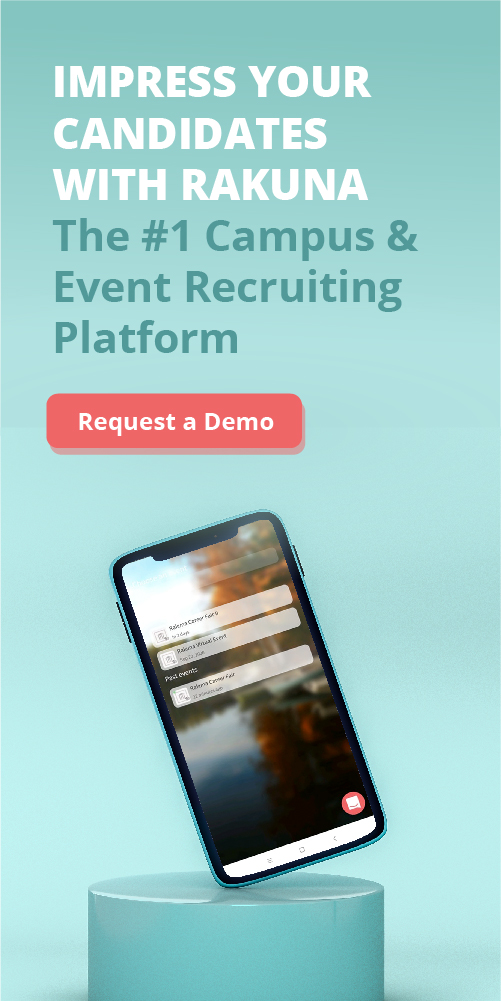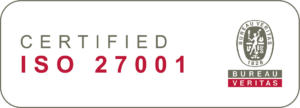We’re living in the digital era, and information is more than abundant. Job searchers are inundated with endless data. But that equals intense competition for companies whose information, if not memorable, is easily lost in the hassle.
The paradigm has shifted. Companies no longer hold the power. Candidates do. They have infinite choices nowadays, and recruiters have to actively search for them instead of waiting for them to find you.
The average attention span has shortened considerably with the advent of social media and popular platforms like TikTok and short-form content. Regular ads are easily skipped, and companies face a new challenge of capturing the potential candidates’ attention. So, if you’re looking for applicants, it’s time to be creative with your recruiting campaigns and try these creative recruitment strategies.
Creative Recruitment Strategies: Promote Employee’s Experience

Cast your mind across the talent current landscape. What’s clear is that the concept of ’employee experience’ – what it genuinely feels like to work at your company day in and day out – has cemented itself as a non-negotiable strategic priority. It’s moved far beyond being just a modern HR buzzword; it’s a fundamental driver for attracting and keeping the talent you need to succeed.
Competitive salaries still matter (especially with economic uncertainty), but Gen Z and the emerging Gen Alpha workforce are evaluating jobs through a much wider lens. They’re not just chasing titles; they’re seeking workplaces where they belong, contribute meaningfully, and see purpose woven into their day-to-day work.
In this environment, one of the most effective creative recruitment strategies is to authentically showcase your employee experience, not just by listing benefits, but by painting a vivid, relatable picture of what it truly feels like to work at your company.
Putting the Modern Employee Experience on Display for Candidates
Implementing a strategy focused on showcasing employee experience requires a thoughtful, proactive, and transparent approach that touches every part of the candidate’s journey, from their very first impression to their initial months on the team.
Identify Your Organization’s Values
Firstly, you need to get crystal clear on your own culture and values. Before you can possibly showcase it, you must authentically define it. What are the core beliefs and principles that guide your company? More importantly, how are these values lived out every day by your employees and leadership? Engaging your current employees in candid conversations about what makes your workplace unique and positive will provide invaluable insights – their perspectives form the most authentic foundation for any recruitment messaging.
Use this understanding to weave your values and culture directly into job descriptions. Think of each job posting not just as a list of duties but as an introduction to your company’s world, helping candidates envision if their own values and aspirations align.
Content Creation
Next, focus on creating compelling and authentic content. Static career pages simply won’t cut through the noise. You need dynamic content that demonstrates the employee experience rather than merely describing it. Encourage real employees to share their stories and career paths through video testimonials, blog posts, or even social media takeovers. These genuine voices are far more persuasive than corporate speak. Provide behind-the-scenes glimpses using platforms where younger candidates are active, like TikTok and Instagram, offering a peek into daily work life, team dynamics, and both your physical workspace and how seamless hybrid or remote work is supported.
Be sure to explicitly highlight your commitment to employee well-being, detailing mental health resources, flexible work arrangements, wellness programs, and proactive efforts to prevent burnout. Equally important is showcasing your diversity, equity, and inclusion (DEI) initiatives, explaining how DEI is integrated into your culture, and spotlighting employee resource groups (ERGs) or programs that support a truly diverse workforce.
💡 While primarily for current employees, consider how mentioning your use of integrated Employee Experience Platforms (EXPs)—like Microsoft Viva, for example—demonstrates a commitment to providing a seamless digital work environment from day one, reinforcing a positive tech-savvy image.
Real-World Examples:
Many companies are successfully incorporating elements of showcasing employee experience into their recruitment and overall talent strategies:
- Leading tech companies like Salesforce and Adobe are often cited for their focus on personalized employee experiences, offering tailored career development paths and flexible benefits that resonate with individual employee needs.
- Companies known for strong values and culture, such as Patagonia and Ben & Jerry’s, attract talent by clearly demonstrating their commitment to social responsibility and sustainability, aligning with the purpose-driven mindset of many candidates today.
- Fiverr – a freelance service market – has adapted this strategy and made a recruitment video to tackle the generic concept of such a video. In the clip, the narrator speaks directly to the candidates, giving the ad a personal touch. By mocking the conventional workplace, they emphasize freelancers’ freedom, thus attracting more applicants looking to do freelance work.
Creative Recruitment Strategies: Build a Thriving Employee Referral Program

One of the most powerful—and criminally underused—recruitment tools you already have? Your own employees. They live and breathe your culture, know the real day-to-day, and have networks full of talent. In 2025, a strong employee referral program isn’t just creative; it’s essential.
Think of your employees as your most credible brand ambassadors. A referral carries trust and authenticity that no job ad can fake, especially with Gen Z and Gen Alpha, who are wired to trust peer recommendations over polished marketing.
The benefits of a referral program speak for themselves:
-
Higher-quality hires with better cultural fit.
-
Faster time-to-hire – 10 days faster, according to Eqo, an employee referral solution employed by large US enterprises like BJC Healthcare.
-
Better retention rates thanks to built-in support systems.
-
Lower cost-per-hire versus traditional channels.
-
Increased employee engagement as staff feel invested in company growth.
But let’s be clear: a casual “tell your friends” policy won’t cut it anymore. To make a referral program work today, you need a clear structure, strong incentives, and the right tech behind you.
Building an Effective Referral Program:
-
Define Clear Goals: Are you aiming for faster hires, more diverse candidates, or filling hard-to-hire roles? Start with clarity.
-
Keep the Process Simple: Make it ridiculously easy to submit referrals and track progress.
-
Equip Your Ambassadors: Regularly update employees about open roles and share tips (and easy social media content) to help them spread the word.
-
Leverage Technology: Use modern referral platforms that integrate with your ATS, support mobile access, offer AI-matching, and gamify the experience (leaderboards, rewards, and all).
-
Create Motivating Rewards: Go beyond cash bonuses. Offer wellness perks, experiential rewards, professional development opportunities, extra PTO, or even charity donations. Tiered rewards for different milestones and longevity bonuses (e.g., at 3, 6, 12 months) can drive even stronger results.
-
Promote and Celebrate: Don’t just launch—build hype. Celebrate referral wins publicly, keep communication transparent, and tie the program into broader DEI efforts.
Bottom line: Employee referral programs can easily be more than “nice to have”—they’re a major competitive advantage. Set yours up right, and watch the quality and speed of your hiring transform.
💡 Check out this guide on how to weave employee referrals into your social media recruiting strategies
Intel as an Example
Intel has been noted for efforts to tie referral bonuses to diversity goals, encouraging employees to refer candidates from underrepresented backgrounds to build a more inclusive workforce.
Companies in high-demand sectors like healthcare and finance are increasingly relying on referrals due to talent shortages and the need for trusted hires with specific skills, often offering competitive bonuses that reflect the market demand.
Creative Recruitment Strategies: Embrace and Leverage Technology

Relying on manual processes today is like showing up to a Formula 1 race with a tricycle. Digital-native candidates expect speed, convenience, and personalization, and technology delivers that at scale.
The leap from paper resumes and endless email chains to automated workflows has reshaped the entire hiring journey. Tech now powers everything from first touchpoints to final offer letters. Smart recruitment means using digital tools not just to save time, but to gain insights, enhance engagement, and make sharper hiring decisions.
Key Technologies Transforming Recruitment in 2025:
-
ATS and Recruitment CRM: Sophisticated hubs for tracking candidates, automating communication, and integrating with broader HR systems.
-
AI and Machine Learning: Powering sourcing, screening, scheduling, and personalized candidate experiences—while helping reduce bias when used ethically.
-
Recruitment Automation Tools: Handling repetitive tasks like follow-ups, interview scheduling, and multi-platform job postings with minimal human lift.
-
Video Interviewing and Assessment Platforms: Offering remote interviewing flexibility with features like one-way videos and AI analysis (ethical use = non-negotiable).
-
Mobile Technology: Enabling candidates and recruiters to interact seamlessly on the go, from application to pipeline management.
-
Data Analytics and Reporting: Driving smarter strategies with insights on metrics like time-to-hire, source of hire, and conversion rates.
These technologies aren’t just cool gadgets—they fundamentally change the recruitment process. AI-powered sourcing expands reach beyond active applicants. Automated screening tools filter massive candidate pools efficiently. CRM-driven communication and chatbots keep candidates informed and engaged without overwhelming recruiters.
Interview scheduling becomes frictionless through automation, while virtual and hybrid events now feature live chats, virtual booths, and instant resume drops, with mobile apps replacing old-school paper forms even for in-person fairs. And once an offer is accepted, onboarding is faster and smoother thanks to automated document management and online training modules.
Ethical Considerations in AI-Driven Recruitment:
While the potential of AI in recruitment is vast, it’s crucial to address the ethical implications. Issues like algorithmic bias, lack of transparency in AI decision-making, and data privacy are significant concerns in 2025. Responsible implementation requires:
- Regular audits for bias in AI tools.
- Transparency with candidates about how AI is used in the process.
- Maintaining human oversight, especially for critical hiring decisions.
- Ensuring data privacy and security compliance.
💡 Additional Material: DEI Tips to implement AI into your recruitment strategy without losing the human touch
Take it from National Grid
An exemplary case study is National Grid. Previously, when attending campus recruiting events, the team would show up with printed sign-in paper and had prospects note down their contact information. Unfortunately, due to compliance issues and following the Legal Team’s policies, the team couldn’t collect resumes to bring back to the office, meaning all the data-collecting work had to be done right at the events. The manual processing approach and the follow-up after each event were inefficient and frustrating to the National Grid Recruiting team. They know they have to find the right recruiting software to help with all manual tasks.
When National Grid adopted a recruiting platform, they immediately saw concrete results:
- Save 50-60 hours of administrative and manual work per semester
- Increase 10% in the number of students applying to National Grid every year since 2017
- Increase the company branding by promoting to the millennials and Gen Z that they, too, are tech-savvy companies.
So how do they do it, exactly?
At offline recruitment events, the team utilizes both their smartmobile phones to collect the prospects’ information and iPads to have students manually input their data in case they forget to bring their resumes. This way, the team avoids missing out on any potential candidates. “The students’ reactions to us and themselves using the app have been really positive,” they love seeing a tech-savvy company that is committed to implementing cutting-edge technology solutions into their daily work practices.
Showcase Skills Through Competitions and Challenges
In 2025, recruiters aren’t just posting jobs and hoping for the best—they’re turning up the creativity to find and connect with top talent. Skill-based competitions and out-of-the-box marketing campaigns are quickly becoming go-to strategies for companies that want to engage candidates beyond the resume.
Why Skills-Based Challenges Work
Today’s hiring world prizes hands-on ability over buzzword-heavy resumes, and recruitment challenges let candidates prove their skills where it matters: in action. Think “The Social Network” coding scene, but without the beer chugging (hopefully). Competitions are a smart filter for spotting real-world capability, uncovering candidates who might not shine in a traditional interview but can crush a real task.
Challenges aren’t just a flashy gimmick—they deliver real hiring value:
-
Spot true top performers: See candidates’ skills, problem-solving, and grit in real-world conditions.
-
Verify abilities, not just claims: Perfect for 2025’s shift toward skills-first hiring.
-
Boost engagement: Candidates get to flex their talents—and get excited about your company.
-
Strengthen employer branding: Hosting visible challenges positions your brand as innovative and talent-focused.
-
Cut time and costs: Competitions can speed up hiring by spotlighting the best early.
-
Support diversity efforts: Skills-focused assessments reduce bias baked into resume reviews.
Types of Recruitment Competitions in 2025
Recruitment challenges today come in many flavors—tech-powered, scalable, and tailored for different roles. Coding challenges, case competitions, design projects, gamified assessments, and realistic job simulations are all popular formats. Tools like hackathon platforms and game-based assessments make it easy to scale these events online, giving you access to broader, more diverse candidate pools.
Making Your Competition Work
Start by defining the core skills you want to test. Choose a platform that fits your needs—whether it’s coding, design, or case-based problem-solving—and promote the event widely through your career site, social channels, and university partners. Set clear rules, offer resources if needed, and, importantly, communicate the reward: a job interview, a spot in a talent pool, or even a cash prize. Even candidates who don’t “win” should walk away with a positive impression of your brand.
Bottom line? Recruitment challenges in 2025 aren’t just fun—they’re strategic. They help you find real skills, build buzz around your brand, and deliver a candidate experience that feels fresh, fair, and future-ready.
Case in Point: The MGM Grand’s “Iron Chef” Style Cook-Off
One famous example of this method is when the MGM Grand, one of Las Vegas’s biggest casinos, took inspiration from the TV show Iron Chef when looking for a new head chef for one of their Asian restaurants. Contestants are handed a secret ingredient and asked to assemble a 4-course meal in under 1 hour.
By having candidates perform the actual job under pressure, they could directly assess culinary skills, creativity, and ability to work within constraints – qualities crucial for the role. This approach, while perhaps less tech-heavy than a coding challenge, embodies the principle of evaluating talent based on demonstrated ability.
More modern examples involve companies like Nestlé, which has used gamified assessments in its hiring process for large-scale programs, seeing significant improvements in efficiency, fairness, and candidate experience.
Bonus Recruitment Strategy: Create Out-of-the-box Advertisements
Why not consider creative ads if you’re seeking a creative recruitment strategy? If done right, each ad can go viral, promoting your values and workplace culture in a fun way that is sure to make people notice. Now you’re hogging all the attention, well done!
Choose the most creative team, and let them roam. Advertising is an art, and you can create hidden ads, viral videos, viral photos, and, God forbid, memes. Meme videos are part of the Internet culture now, and it would be such a shame to pass on this gold mine.
Each of the above creative recruitment strategies comes with an example of a good ad. There are many more to see and to learn from. Be creative; that’s what creative recruiting is about. If you need any inspiration, here are some examples:

Conclusion
If you want your recruiting campaign to succeed, you must come up with out-of-the-box recruiting strategies. We’re living in a fast-paced world where it takes people less than 10 seconds to decide whether to read an article or watch a video. So be bold, decisive, assertive, and, most of all, over the top.
To sum up, when you think of creative recruitment, think about:
- Focus on showcasing your company culture. After all, that’s what your potential candidates care about.
- Emphasize the characteristics of the work they are expected to do.
- Actively hunt for candidates but, at the same time, make them come to you, be it out of curiosity or a predetermined goal. You don’t have to take control of them. Let them have a variety of choices. You just have to be the best choice for them.
- Make technology an ally. Boost your results with technology leverage.
- Last but not least, take advantage of social media’s power and its virality. Attention to small details helps you reach a massive audience, giving you many choices, just like the candidates.


